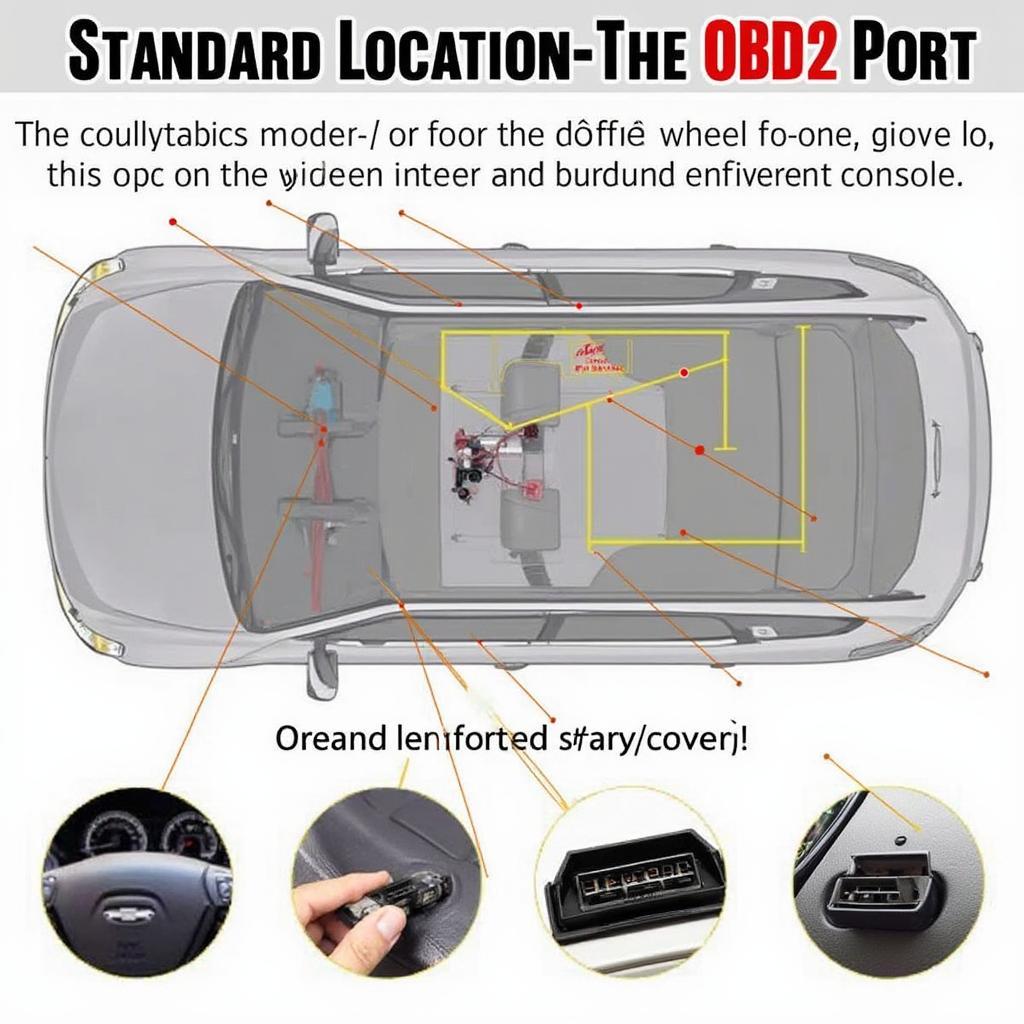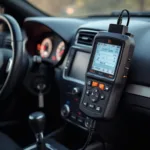The term “map obd2” often leads to confusion. It can refer to using OBD2 data with mapping software, understanding the location of the OBD2 port, or even manipulating engine maps via the OBD2 port. This comprehensive guide will delve into all aspects of “map obd2,” providing clarity and valuable insights for car enthusiasts and professionals alike.
What Does “Map OBD2” Actually Mean?
“Map obd2” isn’t a standardized term. It encompasses several concepts related to OBD2 and mapping. Firstly, it can refer to using OBD2 scanners to collect vehicle data, which is then overlaid onto maps using software. This can be useful for fleet management, tracking vehicle performance, or even diagnosing issues on the go. Secondly, it can relate to locating the OBD2 port itself, which can sometimes be tricky. Lastly, “map obd2” can also be associated with modifying engine performance parameters, sometimes called “remapping,” through the OBD2 port.
Locating Your OBD2 Port
Finding your OBD2 port can be easier than you think! It’s typically located within a few feet of the steering wheel, often under the dashboard or inside the glove compartment. The port itself is a trapezoidal, 16-pin connector. Some vehicles might have a cover protecting the port.
Why is Knowing the OBD2 Port Location Important?
Knowing where your OBD2 port is located is crucial for performing diagnostics, checking engine codes, and even customizing certain vehicle features. Whether you’re a DIY mechanic or prefer taking your car to a professional, access to the OBD2 port is essential for vehicle maintenance.
Using OBD2 Data with Mapping Software
OBD2 scanners can collect a wealth of data, including speed, RPM, engine load, and fuel consumption. This data can be integrated with mapping software to create a visual representation of vehicle performance across different locations. This functionality can be particularly useful for businesses managing fleets of vehicles.
Remapping and the OBD2 Port
Some OBD2 scanners allow for engine remapping, also known as chip tuning. This process involves modifying the engine control unit (ECU) parameters through the OBD2 port to alter performance characteristics such as horsepower and torque. However, it’s crucial to proceed with caution, as improper remapping can damage the engine or void the vehicle’s warranty.
Common “Map OBD2” Questions
How can I find my OBD2 port?
Refer to your vehicle’s owner’s manual or search online using your car’s make and model.
What data can I collect with an OBD2 scanner?
OBD2 scanners can collect a wide range of data, from speed and RPM to engine temperature and fuel consumption.
Is remapping safe for my car?
Remapping can be safe if done correctly by a qualified professional. However, improper remapping can damage your engine.
Conclusion: Mapping Your Way to Better Vehicle Diagnostics with OBD2
Understanding the various interpretations of “map obd2” is key to effectively using this powerful diagnostic tool. Whether you’re locating your OBD2 port, using mapping software with OBD2 data, or exploring the possibilities of remapping, a thorough understanding of these concepts empowers you to take control of your vehicle’s performance and maintenance.
FAQ:
- What is an OBD2 port?
- How do I use an OBD2 scanner?
- What are OBD2 trouble codes?
- Can I reset OBD2 codes myself?
- What are the benefits of using OBD2 data with mapping software?
- What are the risks of engine remapping?
- Where can I find a reliable OBD2 scanner?
Contact us for support: WhatsApp: +1(641)206-8880, Email: [email protected] or 789 Elm Street, San Francisco, CA 94102, USA. We have a 24/7 customer support team.


